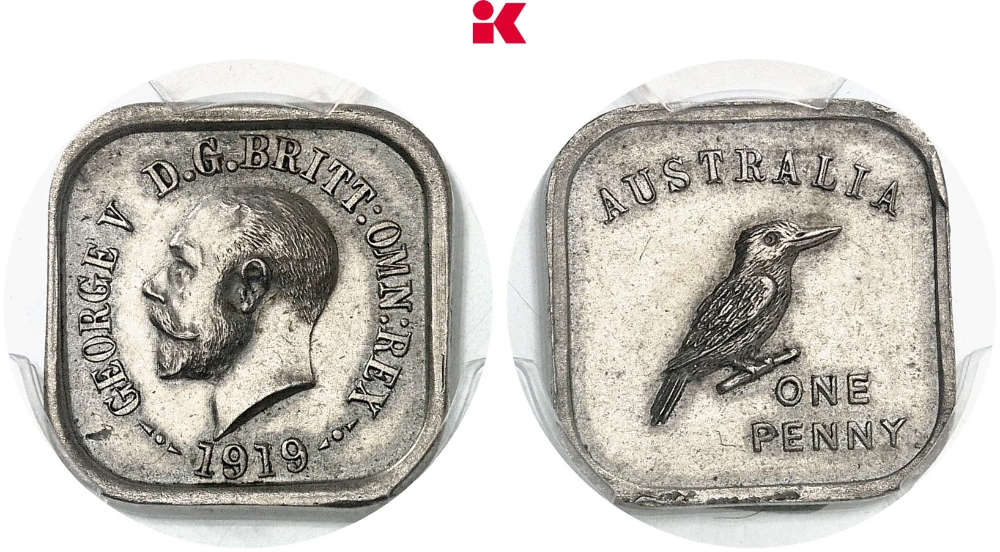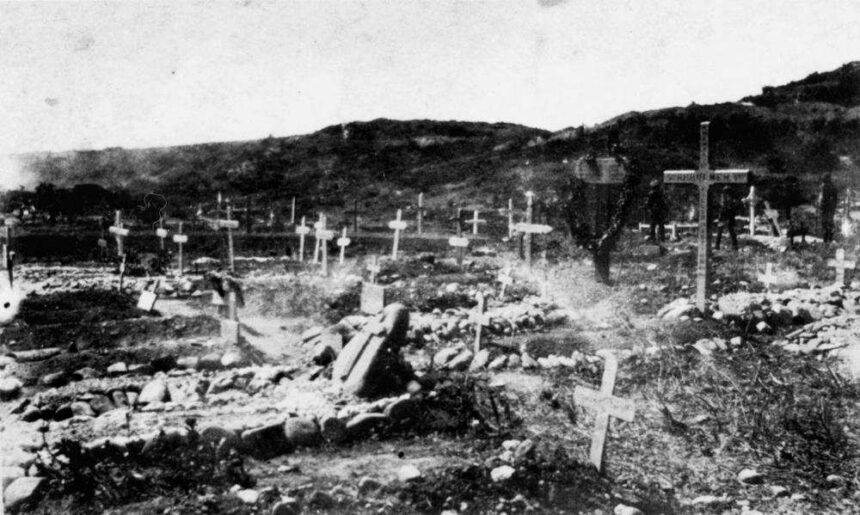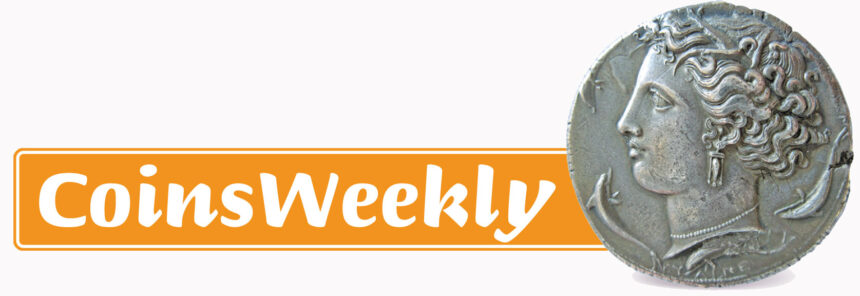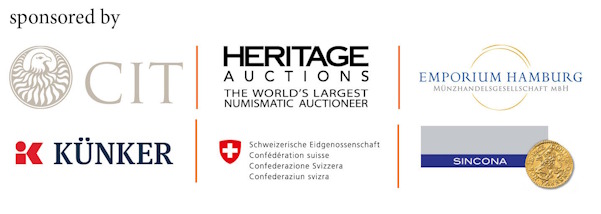Australia and its kookaburra penny
During the Battle of Gallipoli, 8,709 Australians were killed and 17,924 were wounded. An enormous toll – at least in relative terms! Around one in every 50 Australians of military age was affected. After the war, Australia therefore demanded a new role in the Commonwealth. A coin that will be auctioned at Künker on 8 October 2025 commemorates this event.

In 1919, samples were created for new Australian coins. Today, they are very rare and popular not only in Australia. One of them will be auctioned at Künker on 8 October 2025.
What can be seen on the Kookaburra penny?
The front shows British King George V. He was also head of state of the Commonwealth, to which Australia belonged. He is not wearing a crown. The Australian World’s News of 23 December 1939 considered this remarkable. It states that the king himself gave permission for the crown to be omitted. This is not true. George V is almost always depicted without a crown. Only one type of Kookaburra penny shows him wearing a crown. The journalist who wrote an article about the coin in 1939, in the run-up to the Second World War, had confused the exception with the rule.
The inscription on the front is in Latin. Translated, it means: George V, by the grace of God, King of all Britons. Below the neck section, we see the year of minting, 1919.
On the back, there is a kookaburra sitting on a small branch. Above it, you can read the country name Australia, and below it, the nominal value ‘One Penny’.

What connection does the kookaburra penny have to the First World War?
No other army unit paid a higher price in blood than the ANZAC, the Australian and New Zealand Army Corps – at least if you calculate the dead and wounded as a proportion of the population. During the Battle of Gallipoli, which raged from 25 April 1915 to 9 January 1916, 8,709 Australians were killed. 17,260 were seriously injured or maimed. This meant that every 50th Australian of military age – whether in the field or at home – was affected. With a population of around 5 million, this developed into a national trauma. Prime Minister Billy Hughes wanted to use this to gain greater independence from the overpowering London.
He appeared confidently at the Paris Peace Conference and demanded extensive reparations for his country. Nationalism was growing in Australia. Among other things, this manifested itself in attempts to introduce new, separate coins. The Australian government commissioned the Melbourne Mint to produce samples of the penny and half-penny. The mint passed this task on to a private company in Melbourne. Since the mid-19th century, Stokes & Sons had repeatedly produced medals, uniform buttons and samples on behalf of the state. Melbourne artist Charles Douglas Richardson was commissioned to design the stamp.
Around 200 samples have survived, their unusual shape inspired by Ceylonese coins. The Australian coins were initially to be made of bronze, before a decision was made in a second step to use the much lighter nickel, as reported in a detailed article in the evening edition of the Herald on 20 March 1920. Let us hope that this journalist had better sources than his colleague. In 1921, the project was abandoned. A new finance minister set different priorities. The theory that the coins were not minted because it would have required the conversion of all coin-operated machines is doubtful. Although vending machines had existed in England since the turn of the century, they are said to have only played a role in Australia since the middle of the 20th century.
What is a kookaburra penny worth?
The coin offered by Künker is valued at €7,500, which is purely symbolic. Kookaburra pennies usually change hands for a five-figure sum. The exact amount depends, among other things, on which variant the penny belongs to. The coin offered by Künker is one of the more common types, although ‘common’ is relative. It is now believed that only 15 examples of the so-called Type 3 exist. There are between 3 and 40 examples of other variants. The last Type 3 / 1919 Kookaburra penny was auctioned in September 2021 in Queensland at International Auction Galleries. It was sold for the equivalent of €20,150 at the exchange rate at the time.
The catalogues for the Künker autumn auctions from 7 to 9 October 2025 can be found on the Künker website. Click here to go to the overview page for all auctions. This link takes you directly to the lot we are presenting.
You can find all types of Kookaburra pennies in an excellent compilation by Coinworks.
The Battle of Gallipoli has found its way into Australian song. Many songs deal with the subject. One of the best known is The Band Played Waltzing Matilda, written by Eric Bogle (from 1:00 minutes). But there are also more modern songs such as Diggers of the Anzac and The Lost Soldier.
Text and images: Ursula Kampmann

